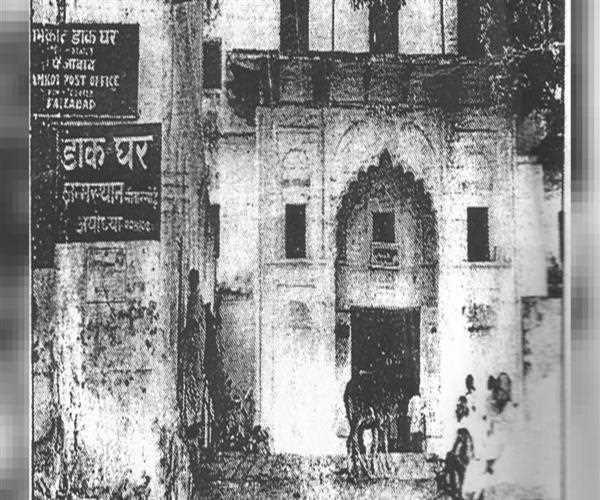Search here

25-Jun-2024 , Updated on 10/7/2025 2:27:21 AM
The Fierce Struggle for Ram Mandir: A Journey from Destruction to Reconstruction
In 1528, Mir Baqi, Babar's ruthless general, laid the foundation of the Babri Masjid in Ayodhya, right where Lord Shri Ram was born, by brutally demolishing a temple. The Mughals arrogantly expelled God from His own house, but they couldn't grasp that Ram resides in the hearts of millions of Indians, and our unwavering faith in Shri Ram remains unshaken, despite years of court battles and controversies over building the Ram Mandir.
For nearly 500 years, Hindus waited with bated breath, and finally, the triumph of Sanatan Dharma was realized in 2019. On January 2, 2024, Lord Ram will emerge from the tent to once again reside in a temple. If you're watching this, the consecration ceremony in the Ram temple may already be complete. Loyal to your faith, you should understand the harrowing journey from the construction of the Babri Masjid to the rebuilding of the Ram temple. Just two years after the Mughal Empire began in 1526, in 1528, Babar's henchman Mir Baqi brazenly demolished the Ram Mandir in Ayodhya on Babar's orders. He erected the Babri Masjid in its place, an act of blatant desecration. During the Mughal era, thousands of temples were mercilessly destroyed, and evidence of this vandalism still scars the country today. Babar silenced dissent and kept Hindus away from their deities in their own land.
The story took a twist in 1813 when British officers near Faizabad discovered Hindu temple-like sculptures inside the mosque. This revelation sparked Hindu organizations to claim that Babar demolished the Ram temple in 1528, inciting hatred and communal violence in Ayodhya. Yet, Hindus and Muslims continued to worship at the same site. In 1717, nearly 200 years after the Babri Masjid's construction, Jaipur's second king, Raja Jay Singh, attempted to reclaim the land around the mosque to rebuild the Ram Mandir but failed. Instead, he built a platform named Ram Chabutra for devotees to worship.
The main dome of the structure was erected 150 feet away from the original in 1855. By 1885, the legal battle for the Ram Janmabhoomi reached the courts, where Nirmohi Akhara's head, Raghuvir Das, demanded to make the temporary Ram Chabutra a permanent temple. The judge ruled that Hindus could worship there but couldn't build a permanent structure or demolish the mosque. In 1934, riots again damaged the Babri Masjid, and despite repairs, prayers ceased. Under British rule, the common people continued their struggle to reclaim their deity's birthplace.
Independence in 1947 raised hopes for the Ram temple's construction, but Congress leaders remained silent. The real controversy erupted on December 23, 1949, when rumors spread that idols of Lord Ram appeared inside the disputed structure. Hindus claimed divine intervention, while Muslims accused foul play. Prime Minister Jawaharlal Nehru ordered the removal of the idols, but District Magistrate KK Nayar hesitated, fearing riots. The Faizabad court declared the Babri Masjid a disputed site and locked its main gate.
In 1950, petitions were filed for permission to worship Ram Lalla and place a statue of Lord Ram inside the disputed structure. The Nirmohi Akhara claimed ownership of the land in 1959, followed by the Sunni Waqf Board's counterclaim in 1961. The BJP, formed in 1980, openly supported the Ram Mandir movement. The RSS and VHP joined the cause, escalating the fight to unlock the Babri structure for worship. On September 25, 1984, the Ram Jan Yatra began, culminating in a massive gathering in Ayodhya.
Prime Minister Indira Gandhi's assassination on October 31, 1984, abruptly ended the Yatra. In 1985, the Ram Mandir dispute took a new turn with the Shah Bano case. Rajiv Gandhi overturned the Supreme Court's decision, angering Hindus, who accused him of appeasing Muslims. To quell Hindu outrage, Rajiv Gandhi authorized the reopening of the Babri structure for worship, enraging Muslims who formed the Babri Masjid Action Committee in 1986.
The BJP's Lal Krishna Advani declared the Ram temple movement a BJP cause in 1990, organizing a chariot journey from Somnath to Ayodhya. Despite police efforts, karsevaks stormed Ayodhya on October 30, 1990, and raised a flag on the disputed structure. Uttar Pradesh Chief Minister Mulayam Singh Yadav ordered police to shoot, killing many karsevaks.
On December 6, 1992, under Prime Minister PV Narasimha Rao and UP Chief Minister Kalyan Singh, 200,000 karsevaks demolished the Babri Masjid. The destruction led to chaos and the president's rule in UP. Kalyan Singh resigned but expressed no regret. Despite the ensuing riots, legal battles continued. The Supreme Court's 2019 ruling paved the way for the Ram Temple's construction, a victory after 492 years.
In 1528, on Babar's orders, the Ram Temple was demolished for the Babri Masjid. But now, after nearly five centuries, the Ram Mandir rises again, a testament to the unwavering faith and perseverance of the Indian people.
To know more:
1: Why I want to Visit Ayodhya Ram Mandir?
2: World's reaction on Ram Idol Pran Pratishtha in Ayodhya Ram Mandir
3: Ram Mandir is Not Merely a Property Dispute

Student
I am a content writter !
Comments
Join Our Newsletter
Subscribe to our newsletter to receive emails about new views posts, releases and updates.
Copyright 2010 - 2025 MindStick Software Pvt. Ltd. All Rights Reserved Privacy Policy | Terms & Conditions | Cookie Policy